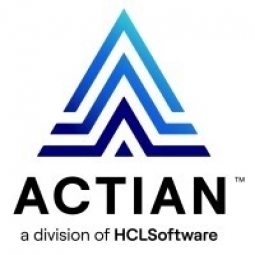Download PDF
Versant Object Database
Technology Category
- Application Infrastructure & Middleware - Database Management & Storage
Applicable Functions
- Sales & Marketing
Use Cases
- Inventory Management
Services
- System Integration
The Challenge
Sabre Holdings, a world leader in the travel marketplace, was looking for an open system solution to provide real-time inventory for travelocity.com and several other websites. The challenge was processing Origination and Destination, also known as Airline Inventory, which requires massive transactional throughput. Relational technology was not a good fit for this task. Sabre was looking to migrate from an expensive and proprietary IBM Mainframe System, TPF, to an open system solution using an object-oriented design approach to run its SabreSonic Inventory System.
About The Customer
Sabre Holdings is a world leader in the travel marketplace. The company merchandises and retails travel products and provides distribution and technology solutions for the travel industry. Sabre Holdings supports travelers, travel agents, corporations, and travel suppliers around the world through its four companies: Travelocity, Sabre Travel Network, Sabre Airline Solutions, Sabre Hospitality Solutions. The company was looking for an open system solution to provide real-time inventory for travelocity.com and several other websites.
The Solution
The solution to Sabre's challenge was the Versant Object Database. This database offered extreme performance and extreme complexity capabilities that directly addressed the database requirements of Sabre’s increasingly complex and evolving data sets. The Versant-based system was implemented to run Sabre's SabreSonic Inventory System, which provides real-time inventory for travelocity.com and several other websites.
Operational Impact
Quantitative Benefit
Related Case Studies.

Case Study
Hospital Inventory Management
The hospital supply chain team is responsible for ensuring that the right medical supplies are readily available to clinicians when and where needed, and to do so in the most efficient manner possible. However, many of the systems and processes in use at the cancer center for supply chain management were not best suited to support these goals. Barcoding technology, a commonly used method for inventory management of medical supplies, is labor intensive, time consuming, does not provide real-time visibility into inventory levels and can be prone to error. Consequently, the lack of accurate and real-time visibility into inventory levels across multiple supply rooms in multiple hospital facilities creates additional inefficiency in the system causing over-ordering, hoarding, and wasted supplies. Other sources of waste and cost were also identified as candidates for improvement. Existing systems and processes did not provide adequate security for high-cost inventory within the hospital, which was another driver of cost. A lack of visibility into expiration dates for supplies resulted in supplies being wasted due to past expiry dates. Storage of supplies was also a key consideration given the location of the cancer center’s facilities in a dense urban setting, where space is always at a premium. In order to address the challenges outlined above, the hospital sought a solution that would provide real-time inventory information with high levels of accuracy, reduce the level of manual effort required and enable data driven decision making to ensure that the right supplies were readily available to clinicians in the right location at the right time.

Case Study
Hardware Retailer Uses Data Warehouse to Track Inventory
Ace tracked which products retailers ordered, when they were ordered and shipped. However, the company could not track or forecast actual sales. Data used for reporting was up to a one-week old, owing to performance and data cleansing issues. Requirement to integrate wholesale and inventory data with POS data to help drive key business decisions, improve category management, lower inventory costs and optimize pricing. Reliance on custom coding to integrate POS data was excessively resource intensive and led to major performance constraints.

Case Study
Remake Enterprise-to-production System
The client was running a legacy material flow tracking system and wanted to replace the system with a more effective one as the system was increasingly expensive to maintain and support and also was not extendable. The client's IT landscape was filled with modern applications and it was difficult to interface the material flow tracking system with modern applications.

Case Study
Expertech - Capital Tool Inventory
Costly tools used to splice fiber optic cables are an important part of Expertech’s operational and capitalized expenses, but the company did not have an automated system in place to track their tools and optimize their usage. The existing data in its tracking system was inaccurate and required manual updating, making it essential for the company to implement an efficient process to track and follow up on its capital tool inventory.







